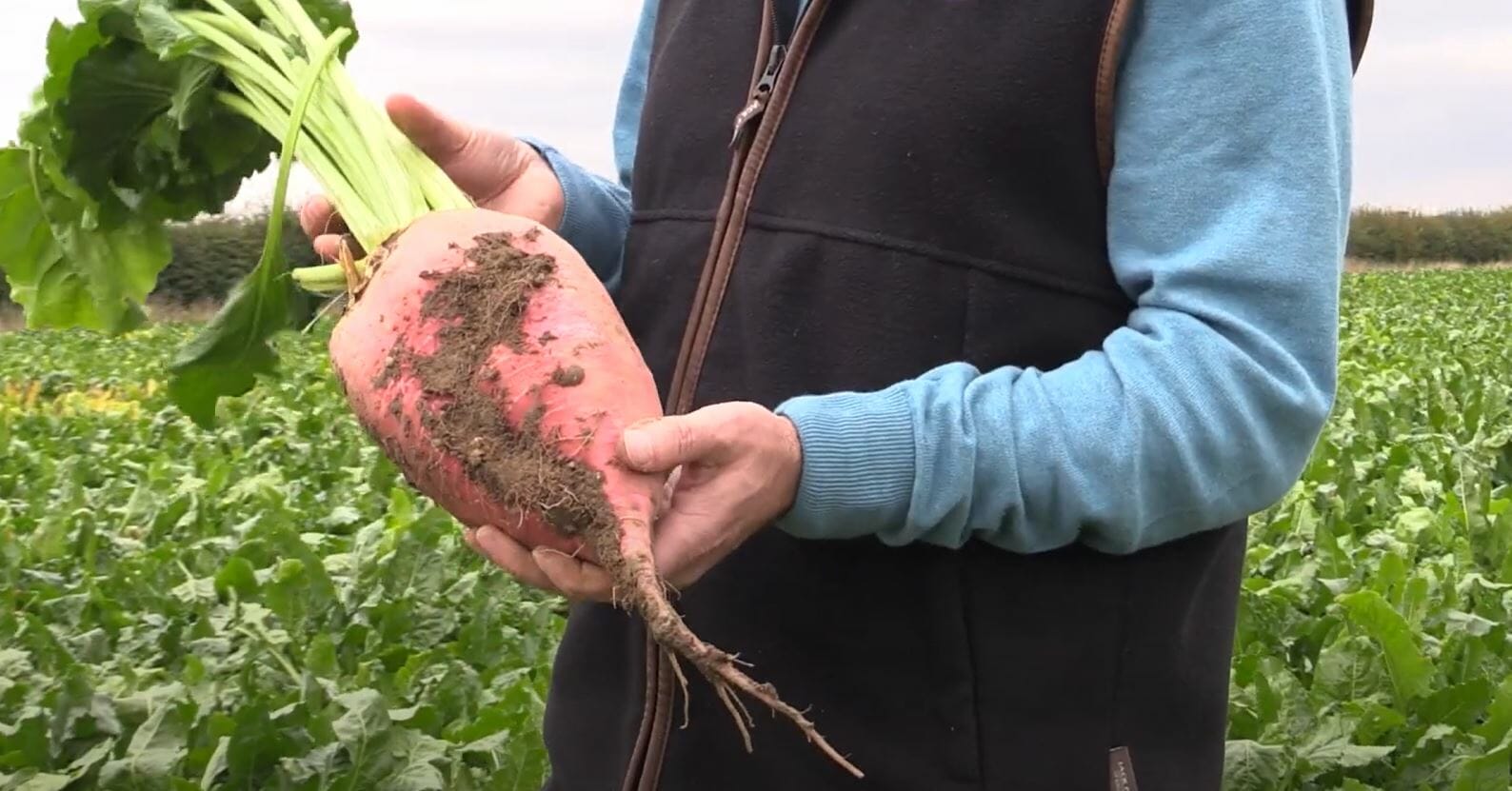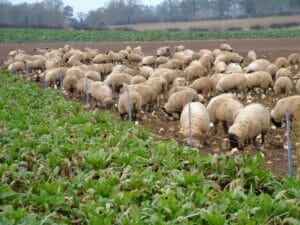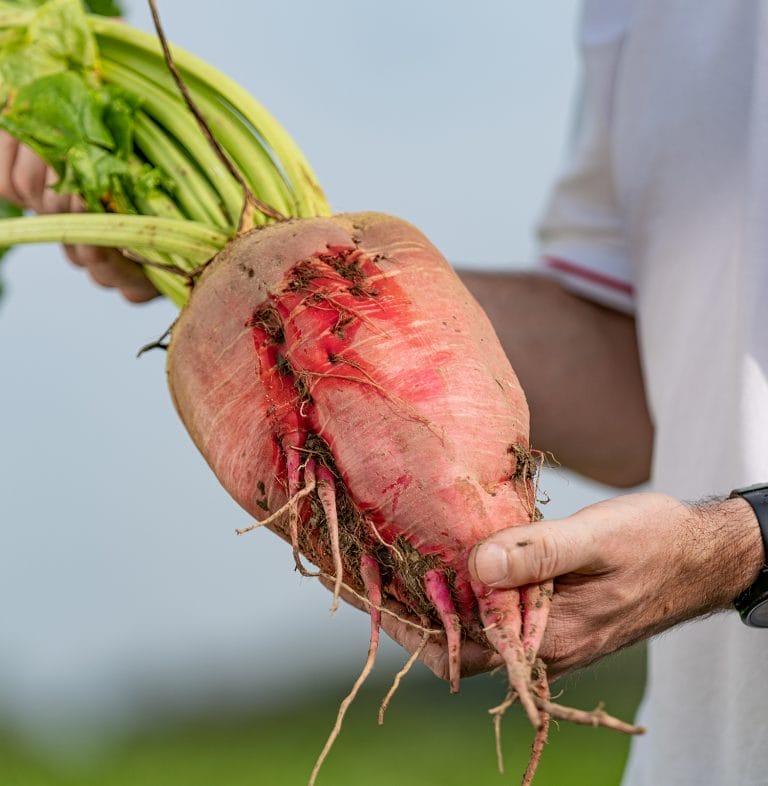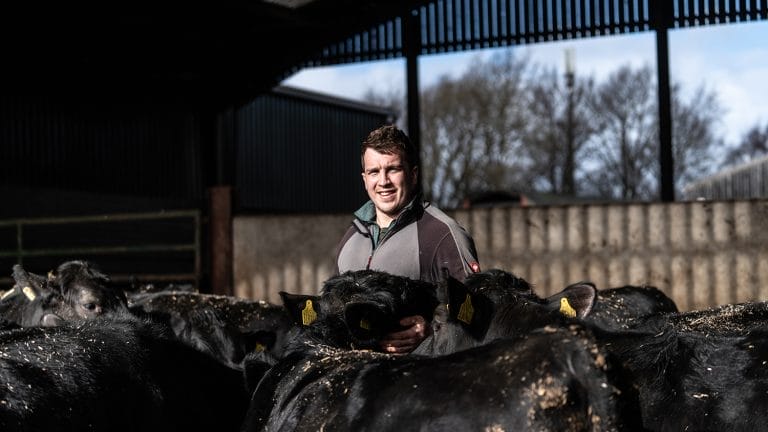
New LG fodder beet varieties raise the benchmark. And add more feed value from home grown forage
New trial data from Limagrain UK, published in January 2023, shows that new fodder beet varieties are raising the benchmark for dry matter yields. But another highlight is the crop’s ability to produce consistently high yields in varying seasonal growing conditions seen in the UK in recent years.
Dedicated UK Fodder Beet Trials
Limagrain UK has run fodder beet trials on its Lincolnshire site since 2008 and compared the performance of commercially available varieties of fodder beet.
“We’ve seen significant improvements in dry matter yields in the past decade, particularly among newer varieties,” says Limagrain UK’s forage crops product manager John Spence. “These fodder beet varieties are raising the benchmark and achieving record yields. They offer a consistently high energy and dry matter home-grown forage for livestock diets.”
In the latest ranking, the new fodder beet variety Fosyma has an average dry matter yield of 14% above the control variety Magnum, equivalent to more than 2.5t DM/ha.
“Fosyma has 21.3% dry matter, and it is one of only a few varieties which are rhizomania tolerant. Fosyma also has good resistance to powdery mildew, rust and leaf spot,” adds Mr Spence.
Fosyma has other proven benefits that add to its appeal. “Its high dry matter is combined with its medium-depth root. We usually associate high dry matter fodder beets with deep rooted varieties, so Fosyma, with a relatively high proportion (35%) sitting out of the ground, bucks the trend. This makes it suitable for grazing in situ as well as for lifting and it carries less risk of soil contamination than the deeper-rooted varieties.”
 Another key advantage of Fosyma is its high tolerance to bolting. It is one of the least likely varieties of fodder beet to bolt. This is particularly beneficial in more extreme seasons, such as the cold spring in 2022, followed by warm weather which can encourage bolting.
Another key advantage of Fosyma is its high tolerance to bolting. It is one of the least likely varieties of fodder beet to bolt. This is particularly beneficial in more extreme seasons, such as the cold spring in 2022, followed by warm weather which can encourage bolting.
Fosyma has been included in the trials since 2019 and has been available to UK growers for the past two years.
High yielding and rhizomania tolerant variety Brick is in second place with a dry matter yield 9% above the control and a dry matter content of 22.8%. It is slightly deeper rooted than Fosyma with 25% of the root out of the ground. These characteristics give the variety excellent winter hardiness.
Reliable Robbos
A more established variety that has held its popularity in livestock diets is Robbos due to its flexibility, combined with high yields. With only 60% of the root in the ground, it is ideal for grazing sheep and cattle, and among shallower-rooted varieties, it offers a high dry matter content of 19.8%. Robbos has been included in the Limagrain UK annual trials since they started in 2008 and it gives consistent and reliable results.
“Fodder beet is really showing its colours as a consistent and reliable livestock feed,” adds Mr Spence. “We see very little variation in yields within a variety between cold, wet or dry seasons.
 “Even after the dry summer of 2022, the crops still produced outstanding yields, and this was even more pronounced among the newer varieties, such as Fosyma, which maintained yields achieved in the previous year and well above 20t DM/ha.”
“Even after the dry summer of 2022, the crops still produced outstanding yields, and this was even more pronounced among the newer varieties, such as Fosyma, which maintained yields achieved in the previous year and well above 20t DM/ha.”
“So, for the same growing costs, farmers can produce significantly more dry matter per hectare by opting for the higher yielding fodder beet varieties.”
Sown in April, fodder beet is harvested from October onwards and can be fed in a total mixed ration or ad lib with maize silage, or it can be grazed in situ.
Limagrain UK publishes its annual trial data, available to all growers to enable them to make informed decisions. There are no recommended lists for fodder beet.
































